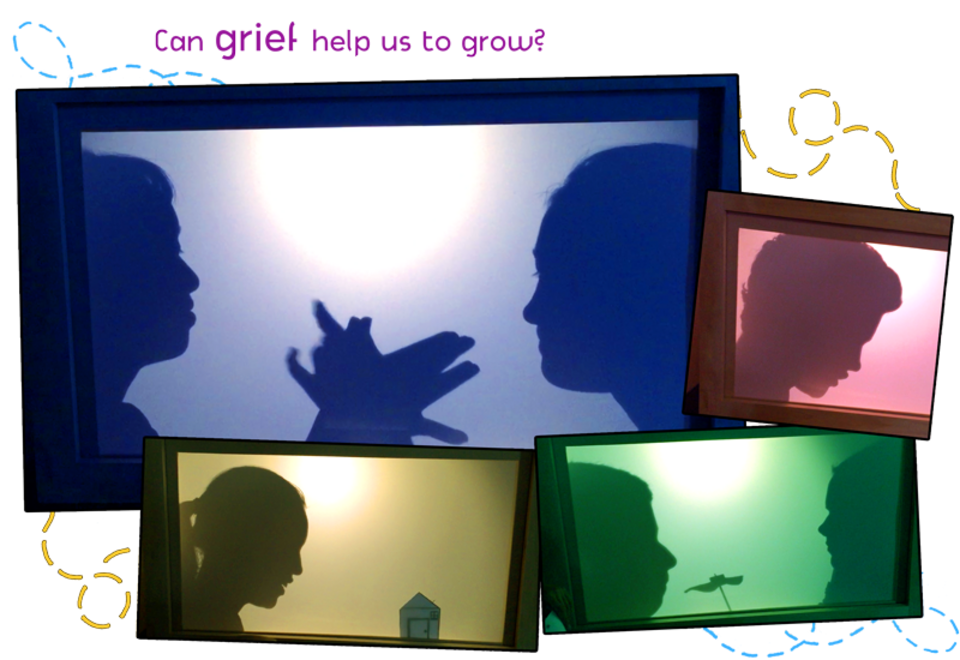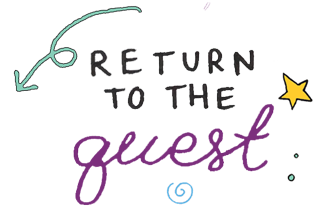
The shadows of grief
| Objective: To share your creative thoughts on grief by sending a shadow message to something or someone you have lost! |
Duration: 15 to 45 minutes
Material:
- Sheets of paper
- Coloured pencils and markers, eraser
Lamp
- Optional: a device to film your shadow message
Instructions:
"Grief" can be a scary word. It's a word we use mostly in difficult situations: We say that we grieve when we have permanently lost someone or something that we loved. In the worst possible case, it's because someone has passed away, but you can also grieve for friends you will never see again or for a time of your life that belongs to the past. If we define grief as having to accept that things will never be the same again, then most people have already experienced grief, albeit to different extents. This activity invites you to think about grief by sending a shadow message to something or someone you have lost.
...
Think about the addressee. First, take a moment to think about something or someone that you loved and that you have lost. It can be as serious as someone who has passed away or as minor as a moment you enjoyed and can never experience again in exactly the same way. It's up to you to choose what you're comfortable with. It's also perfectly normal to feel sad when thinking about what you've lost. Don't hesitate to take the time you need to do this activity and to reach out to your loved ones if you feel the need.
Think about your message. Take a moment to think about what you would like to say to the person or thing that you have lost. Is there something you would like to tell them but never had the chance? Would you like to thank them for the good times you had together? Maybe you just want to tell them that you still think about them from time to time. Even if you can't actually send this message, expressing these feelings can help you deal with the loss.
Set up your shadow theatre. To send a shadow message, you need a light source and a screen. A flashlight such as a phone or a bedside lamp are good light sources and a plain wall (of only one colour) will make a perfect screen! Place the lamp on a table with enough space between the lamp and the wall to put your head in-between. This way, you can express your message using only the shadow of your face's silhouette on the wall.
Send your message. Put your head between the lamp and the wall with your face from the side relative to the screen. Make sure you can see the side of your face on the wall. If you'd like, you can put a camera facing the wall (or ask someone) to film your shadow. Express your message to the person or the thing you have lost.
- Think about grief. Finally, take a moment to ponder the following questions: Is it better to think about the things that you have lost or to try to forget them? Is grief something normal? ... natural? ... universal? Does grief destroy us... or can it help us grow? Maybe it’s both? Why or why not? Write your ideas on the sheet, then take a picture and send it with your first name and age to ipcj@philo.umontreal.ca so that we can share your position with other Philoquesters! If you'd like, you can also send the video of your shadow message.
...
Bonus: If you'd like, you can also imagine the answer that the lost person or thing could send back to you. What might they want to tell you? What would you like them to tell you? To express this response in the form of a shadow message, you can use the other side of your face or cut out a shape from cardboard representing that person or thing, and use it to create a shadow on the wall. Then deliver the message, filming the shadow. Finally, think about the following questions: Can someone or something continue to be with us—and advise us in some way—even after we have lost them? Is it possible to feel happy when thinking back on something or someone we have lost? Should we express some things more freely to our loved ones because we know we could lose them? Why or why not? |

| Tricks for tots: Have you ever lost a toy that you loved? You can choose to send your shadow message to that toy. What memories do you have of good times with the toy? You could tell it something like, "Do you remember when..." and fill in the sentence with a memory! What might you wish for this toy in its new life? Maybe to be living in a nice place or to have found a new friend to play with? Then ask yourself these questions: How bad is it to lose a toy? Are there things that are worth feeling sad about? Can it be good to feel sad every now and then? Why or why not? |
| Tips for teens: Many people talk about grieving for a period of their lives that is coming to an end or is over. Adolescence is a transition stage between childhood and adulthood: Although we often tend to think about what we will gain from being a teenager and, one day, from being an adult, it can also be helpful to take a moment to consider what we will lose when we leave childhood behind. Reflecting on your own life, ask yourself: What did you (or will you) grieve when you leave childhood behind? Is it possible to want to remain a child your whole life? Is it desirable to "keep a child's heart" when you’re no longer a child? Why or why not? |
Share your creative reflections by sending them via email.
Include photos of your projects and notes of your thoughts, as well as your first name and your age!


